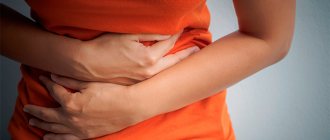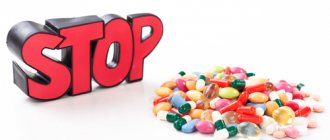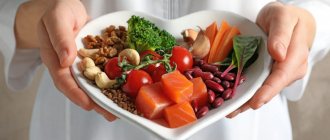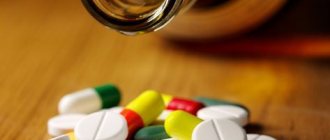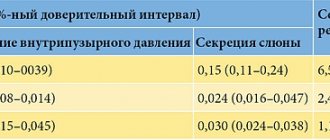Inflammation of hemorrhoids, dilation of the venous vessels of the rectum, fissures in the anus and painful symptoms of the disease cause the patient a lot of discomfort. All effective therapeutic actions are aimed primarily at relieving pain. In the chronic form, it is possible to treat with minimally invasive methods that eliminate the problem itself with a minimal percentage of relapse. Specialists have a good range of names of painkillers and anti-inflammatory drugs in their arsenal, the choice of which depends on the individual characteristics of the patient’s body.
The most effective suppositories for hemorrhoids according to buyers
This section includes suppositories that received the largest number of positive reviews from patients with the initial stages of the disease.
- Methyluracil is an effective drug with a pronounced immunostimulating and anti-inflammatory effect. The use of this drug allows achieving remission in 95% of patients. It accelerates the healing of damage to the mucous membrane and stimulates epithelial renewal. Another advantage of the drug is its price - less than 100 rubles.
- Nigepan. These suppositories have analgesic, anti-inflammatory and thrombolytic effects. Its cost ranges from 400 to 500 rubles.
- Proctosan is a medicinal product with a natural composition. These suppositories relieve inflammation, pain, itching, and also reduce bleeding from hemorrhoids and promote their rapid healing.
When can I get my colonoscopy results?
A description of the intestinal condition can be obtained a couple of days after the procedure. If a biopsy was performed during colonoscopy, the time period increases until the histological examination data is obtained. In the conclusion, the compliance of the patient’s intestinal tube with certain criteria is indicated, as well as additional manipulations performed (if any). In addition to documents, you will be given a disc with a photograph or a reproduction of the colonoscopy process. Patients pass on the information received to the attending physician to determine further tactics for patient management.
Rectal suppositories for severe pain syndrome
Here we will talk about a list of the most effective pain-relieving suppositories used to treat hemorrhoids.
- Proctosedyl M. The composition contains antibacterial, hormonal and analgesic substances. Due to the large number of strong active ingredients, the drug quickly relieves all manifestations of hemorrhoids, even severe ones.
- Procto-glivenol. The drug relieves intense pain and relieves patients from itching. Also, due to the presence of tribenoside in the composition, it improves blood flow in the inflamed area and eliminates swelling.
- Relief Advance - soft suppositories for hemorrhoids. Due to the content of a large amount of vegetable oils, the drug gently relieves pain and reduces inflammatory reactions.
- Relief Ultra. Unlike the previous drug, it also contains a hormonal component, thanks to which it fights the manifestations of hemorrhoids even more actively. At the same time, its cost is, of course, higher.
- Hematrombin G. The drug has a lightning-fast effect. Literally a minute after administration, it relieves itching and pain in the affected area. The effect is realized due to the content of the hormone prednisolone in the suppositories. However, these suppositories do not treat the disease, but only relieve symptoms, and therefore have a short-term effect.
Causes of anal fissure
Anal fissure: schematic illustration
Before moving on to how to treat a crack and which suppositories are best to use, it is necessary to dwell in more detail on the main reasons for their appearance. Because depending on what caused it, treatment will be prescribed. The main reasons include:
- Childbirth, namely the strong tension that appears at the moment of pushing. This tension, as well as a large load, can lead to rupture
- Incorrect management of the postpartum period, namely incorrectly induced first stool. Or rather, it would be more appropriate to say here, not the use of laxatives that soften stool
- Injuries resulting from the passage of hard feces. Most often, this is also supplemented by an infection that penetrates through them.
- Straining with constipation, which stretches the skin
- Lifting weights, as this increases pressure on the rectum
- Mechanical injuries that can result from improper administration of an enema by a nurse, during anal sex, etc.
- Vascular problems that can lead to anal fissures
- Problems with epithelial cells, namely disruption of the maturation process of superficial skin cells
- Neuromuscular lesions of the sphincter, which disrupts cell nutrition processes, which creates a favorable environment for the proliferation of bacteria and microbes
When treating an anal fissure, it is necessary to get rid of not only the consequence itself, but also treat the cause, because otherwise there will be no positive and lasting effect after the procedures, and after some time the disease will return again.
Inexpensive suppositories for hemorrhoids
Most medications for hemorrhoids are quite expensive. Is it possible to find cheap and effective drugs? Of course. This section will present the most popular candles with a loyal pricing policy.
- Belladonna extract is the most natural preparation. Contains exclusively herbal ingredients and costs around 50 rubles. These suppositories relieve spasms and significantly relieve pain. However, the drug will not be able to cope with severe manifestations of the disease, so it is recommended only for mild cases.
- Betiol, like the previous type of suppositories, has a moderate analgesic and antispasmodic effect. The price does not exceed 100 rubles.
- Ichthyol. The drug effectively eliminates pain and also has an antiseptic effect.
Preparing for a colonoscopy
An examination of the intestines requires careful preparation, so the decision on the need for it is made by the doctor based on a combination of clinical history and laboratory results, the current condition and age of the patient. If traditional colonoscopy is not possible, alternative methods are used.
The process of preparing for the procedure includes two stages - switching to a slag-free diet and cleansing the intestines. Three days before a colonoscopy, it is recommended to switch to a gentle diet, excluding fresh fruits and raw vegetables, cereals and pasta, brown bread, fried and smoked foods from the daily menu. It is advisable not to drink carbonated water, coffee and milk. They can cause severe fermentation in the intestines and bloating.
Allowed:
The next stage of preparation is intestinal cleansing.
For this purpose, special laxatives are used. The specialist prescribes a remedy suitable for each patient according to his individual indications.
Most used medications:
The mechanism of action of the drugs Fortrans and Endofalk is that they prevent the absorption of substances in the intestine. This leads to faster movement and evacuation of the contents (in the form of liquid stool) of the gastrointestinal tract. Due to the content of electrolyte salts in laxative preparations, disruption of the body's water-salt balance is prevented (dehydration does not occur, as with ordinary diarrhea).
The action of the drugs Fleet Phosphosoda and Lavacol is based on a delay in the excretion of water from the intestines, which causes an increase and softening of feces, increases peristalsis and leads to rapid emptying.
Another way to cleanse the body is a traditional enema. The procedure is carried out several times using 1.5 liters of clean water.
It is important to remember that on the eve of a colonoscopy, it is advisable to skip dinner, and on the morning of the procedure, you should not have breakfast.
How to insert correctly
Before using rectal suppositories, you must take a hygienic shower, paying special attention to cleansing the perianal area.
It is recommended to insert suppositories once a day after defecation in the morning or evening. If constipation occurs, it is recommended to take a mild, herbal laxative.
Attention! Most suppositories for hemorrhoids have side effects and contraindications, so their use requires mandatory consultation with a specialist. The doctor will select the most suitable drug for you, which will help you quickly cope with the disease.
Treatment of mild to moderate ulcerative colitis
Speech by Professor Shifrin O.S. within the framework of the II International Internet Congress of Internal Medicine Specialists.
Professor Shifrin O.S.: – Good afternoon, dear colleagues. I will give a talk today on the topic of inflammatory bowel disease.
(00:13) Screensaver: 5-aminosalicylic acid preparations in the treatment of nonspecific ulcerative colitis.
Professor Shifrin O.S.: – And it will be devoted to the treatment of ulcerative colitis: how to optimally use 5-aminosalicylic acid preparations in the treatment of this severe, diagnostically and therapeutically difficult disease. What goals does a clinician pursue when taking on the complex task of supervising a patient with ulcerative colitis? First of all, he must achieve clinical remission, but this is not enough. He should try to achieve clinical remission without the use of steroid drugs. Maintenance of clinical remission should be long-term. A very important key to the success of long-term maintenance of clinical remission is the achievement of endoscopic remission, and in the future we will strive to achieve histological remission. As is known, a relatively small number of drugs are used in the treatment of inflammatory bowel diseases. There is a tendency that a number of drugs that were previously used in the treatment only of Crohn's disease are now successfully used for ulcerative colitis. This applies to azathioprine, anticytokine drugs, and some antibiotics that are also used for toxic forms of ulcerative colitis.
There are two approaches to the treatment of patients with ulcerative colitis and Crohn's disease: either we prescribe drugs sequentially from the least strong effect and, accordingly, from the weakest side effects, to stronger drugs that give a greater number of side effects. This approach seems to be the most logical. Another approach is when, already in the early stages, and this is especially true for Crohn’s disease, anti-cytokine drugs are prescribed. These are drugs that do not change the natural course of the disease, but at the same time threaten the occurrence of many severe side effects. It should be remembered that 5-aminosalicylic acid drugs in the first line of treatment for ulcerative colitis have the highest degree of evidence of the effectiveness of their action. Already by 2000, based on a large number of controlled randomized studies, it was shown that these drugs in their effectiveness were supported by the highest level of evidence - 1A.
The first drug of 5-aminosalicylic acid, which began to be used for ulcerative colitis, was “Sulfasalazine”, consisting of two parts: 5-aminosalicylic acid combined with sulfapyridine, which is used as a carrier of 5-aminosalicylic acid under the action of azoreductases produced by colon bacteria , the drug molecules disintegrate into their original parts and exhibit a pharmacological effect. I will dwell a little later on the numerous side effects of this drug. And the prescription of Sulfasalazine now in the 21st century should be treated with great caution.
So, let us remember the recommendations of the European Society for the Study of Colitis and Crohn's Disease in terms of the use of 5-aminosalicylic acid preparations for ulcerative colitis. In the case of a widespread form of colitis, with total colitis, but with moderate activity, at least 2 grams of mesalazine per day is indicated as the basic therapy for exacerbations. This is supported by a high level of evidence of 1A. And what is very important, for total colitis you should also use local topical preparations of mesalazine - this dramatically increases the effectiveness of treatment.
For left-sided colitis with moderate activity, a combination of oral mesalazine and topical drugs is also indicated. At the same time, the effectiveness of treatment significantly increases with a level of evidence of 1B. For proctitis with mild moderate activity, it is possible to initially prescribe suppositories with mesalazine with a high level of evidence. But if there is no effect, this local therapy should be supported by the administration of oral forms of the drug. Maintenance therapy with 5-aminosalicylic acid drugs is recommended for all patients in whom we managed to achieve clinical and endoscopic remission after using 5-aminosalicylic acid drugs as an exacerbation therapy.
Oral therapy is the first line of maintenance therapy and should be used for total colitis, necessarily with the use of oral forms. For proctitis or left-sided colitis, it is possible to use only local forms of mesalazine to maintain remission (not to induce remission). If it is not possible to successfully maintain remission with local forms only, the latter should be combined with tablets. And we must not forget the minimum doses that are necessary to effectively maintain remission. They must be at least 1 gram. At the same time, topical mesalazine preparations, in particular suppositories, should be prescribed at least three times a week for distal colitis. Of course, recommendations are recommendations. And a clinician who has experience in treating such patients can, of course, independently decide many questions about prescribing the drug. The ECCO guidelines do not require scrupulous adherence to them. First of all, the real clinical picture decides.
Thus, according to the experience of our clinic, it is very important to consider the clinical features of the onset of the disease. They also, to some extent, predispose to maintaining remission in the future with one drug or another. Thus, in the case of a purely diarrheal variant of the onset (not diarrheal-hematochezian) of ulcerative colitis, 5-aminosalicylic acid preparations also turned out to be most indicated. 5-aminosalicylic acid preparations are also important in preventing the development of colorectal cancer; unfortunately, a frequent complication of ulcerative colitis is a decisive line for the prevention of colorectal cancer. Screening and genetic studies have not yet been fully developed. Therefore, special importance is attached to the long-term administration of 5-aminosalicylic acid drugs in order to prevent the development of colorectal cancer in our patients.
The first 5-aminosalicylic acid drug was Sulfasalazine. It showed an effect, but it also showed a high incidence of various side effects when using it. According to our data, 40% of patients with ulcerative colitis who took Sulfasalazine experienced some side effects. After Sulfasalazine, the so-called diazo compounds of 5-aminosalicylic acid were developed: Olsalazine, in which two molecules of 5-aminosalicylic acid are connected by a diazo bond, and Balsalazide, in which 5-aminosalicylic acid is connected to a 4-amino-benzoyl-alanine residue. But, unfortunately, these drugs showed approximately the same frequency of side effects as Sulfasalazine.
Later, releasing systems appeared; in the beginning, they were predominantly pH-dependent. That is, the release of mesalazine contained in the tablet depended primarily on the pH of the intestinal contents. The disadvantage of this group of drugs is that, since inflammation of the intestinal wall changes the normal intestinal pH, these drugs often do not work. The situation changed after the development of mesalazine preparations, namely mesalazine microgranules coated with an ethylcellulose coating, the release of which depends on the time the substance remains in the intestine.
The release of the drug "Pentasa", which represents this form, begins already in the duodenum. That is, this drug is good for treating not only ulcerative colitis, but is very suitable for treating Crohn's disease. The drug is evenly distributed in the small and large intestines. What is very important is that it does not linger in the stomach, which avoids a sharp increase in concentration in the blood. Thanks to its gradual release, the drug reaches the distal parts of the intestine. And the rate of drug release remains constant over a wide range of pH of the intestinal contents. That is, in this regard, the drug is very advantageous. The distribution of the drug has been repeatedly studied using various methods, in particular scintigraphy. And here it is shown that mesalazine is released in both the small and large intestines. And the area of application of this drug is both Crohn’s disease and ulcerative colitis. Moreover, various forms are used for these diseases. When studying the distribution of the drug, we noted that the distribution of Pentas was very uniform and applied both to the initial parts of the small intestine, starting with the duodenum, and to the distal parts of the colon.
Let me tell you about a case from our clinical practice. A 35-year-old patient came to our clinic with complaints: loose stools mixed with mucus, sometimes blood, up to 5-7 times a day, flatulence, weakness, weight loss of almost 7 kg in a year. Ill for two years. The young woman was quickly diagnosed with ulcerative colitis; unfortunately, this is not always the case. As with Crohn's disease, we have big problems in the country with the early detection of these diseases. A patient with Crohn's disease was recently admitted to our clinic but had not been diagnosed during his 24 years of follow-up with a typical clinical presentation. That is, of course, we must study the clinical picture of these diseases more deeply.
So, the patient developed hematochezia, diarrhea, and began to lose weight. The correct diagnosis was made - ulcerative colitis. The doctors mechanically followed the path of increasing the dose of Sulfasalazine. At first she took 2 grams, then she began to take 3 grams and, finally, 4 - there was no effect. Fortunately, this patient had no side effects. But the clinical effect of prescribing Sulfasalazine was not achieved. In our clinic, a diagnosis of “nonspecific ulcerative colitis, total form, Truelove I activity” was made, and it was confirmed. We widely use radiation methods to confirm the diagnosis, in particular computed tomography. The computer colonography method allows you to clarify the lesion, at what stage the intestine is affected, the severity of the lesion, the thickness of the intestinal wall, evaluate the fiber adjacent to the intestine, the presence of lymph nodes, and so on.
We prescribed Pentasa to the patient - 3 g/day. As is known, this drug can be used once a day - this increases patient compliance. Naturally, it is easier for a person to take medications once than three times a day. And, accordingly, patients will be more willing to follow the doctor’s recommendations. According to the perfect ECCO recommendations, therapy with an oral drug - Pentasy tablets - had to be supplemented with a new form of Pentasy, which is now proposed, and which we already have at our disposal - suppositories, Pentasy suppositories, which contain 1 gram of mesalazine. Pentasy suppositories can be used once, and not twice a day, as was previously proposed for their use. And with the use of local and oral therapy, we quickly managed to achieve an improvement in the clinical picture.
But I have already said that our goal is to achieve not only clinical remission, but also endoscopic remission. To assess the dynamics of the condition in this regard, we use the Mayo clinical-endoscopic index, which combines both clinical indicators and endoscopic indicators. After treatment with Pentasa tablets and suppositories, the patient’s stool frequency normalized, rectal bleeding and hematochezia disappeared, and the endoscopic picture completely normalized.
What we have as a result: disease activity is 0 points, we have achieved clinical and endoscopic remission. Should we stop therapy? No. And according to our experience and the ECCO recommendations, the recommendations of the American Gastroenterological Association, maintenance therapy should be continued, but the dose of the drug can be reduced. We gradually reduced the Pentasa tablets from 3 grams of the drug per day to 1 gram. We suggested that the patient use Pentasy suppositories three times a week. What can be concluded? 5-aminosalicylic acid preparations remain the first line of treatment for ulcerative colitis. Fortunately, new and increasingly effective drugs containing mesalazine are becoming available to doctors.
(17:25) Screensaver.
Professor Shifrin O.S.: – Several questions were received: “What is a terrible side effect from the use of mesalazine?”
I must say that this is a fairly safe drug. If we compare it with drugs from other groups, this is perhaps the safest drug. It can give cephalalgia, it can give abdominalgia, it can give stool upset. Sometimes it causes such pancreatotoxic reactions, but this is not common. And I repeat, this drug is the safest among all other drugs used in the treatment of inflammatory bowel diseases.
Question: “Should I take probiotics when treating ulcerative colitis?”
This is a controversial issue that is being debated. The Escherichia coli 1917 strain is believed to have some effect and is even included in the recommendations. But nevertheless, the issue of using other strains of microorganisms is being discussed. In particular, with Crohn's disease - Saccharomyces boulardii and so on. This question requires further development, but is very interesting in itself.
Compound
| Powder for preparing a solution for intramuscular administration | 1 fl. |
| active substance: | |
| aminodihydrophthalazindione sodium (Galavit®) | 50 mg |
| 100 mg |
| Rectal suppositories | 1 sup. |
| active substance: | |
| aminodihydrophthalazindione sodium (Galavit®) | 50 mg |
| 100 mg | |
| excipients: vitepsol H15 (fatty acid glycerides) - 575 mg; Witepsol W35 (fatty acid glycerides) – 575 mg |
| Sublingual tablets | 1 table |
| active substance: | |
| aminodihydrophthalazindione sodium (Galavit®) | 25 mg |
| excipients: sorbitol - 315 mg; starch - 140 mg; lactose - 100 mg; calcium stearate - 5 mg; talc - 15 mg; racementhol (menthol) - 0.1 mg |
Side effects of colonoscopy
Colonoscopy usually goes without consequences. Serious complications occur very rarely. Most often they are associated with the doctor’s lack of experience in performing such endoscopic manipulations. Possible risks include:
Release form
Powder for preparing a solution for intramuscular administration. In a bottle, 50 mg, 100 mg. 3 or 5 fl. in a cardboard box.
Rectal suppositories, 50 mg, 100 mg. In blister pack, 5 pcs. 1 or 2 contour packages in a cardboard box.
Sublingual tablets, 25 mg. In blister packs made of PVC film and aluminum foil, 10 or 20 pcs. 1, 2, 3 or 4 contour packages in a cardboard box. 10, 20, 30, 40 or 50 contour packs in group packaging.


